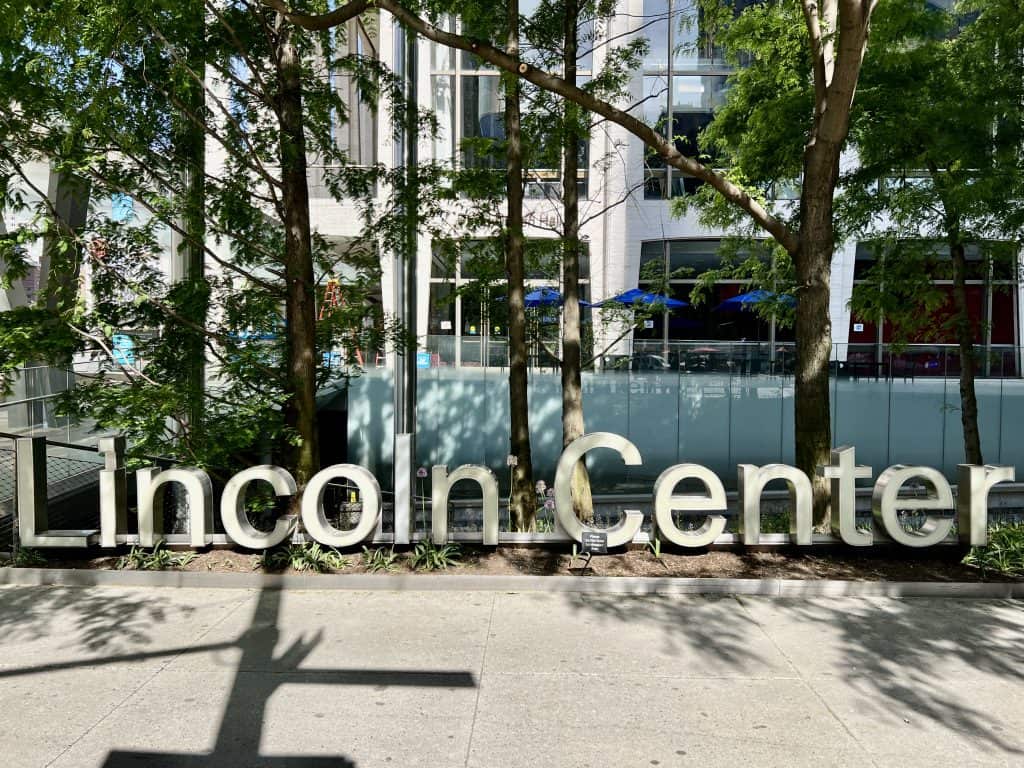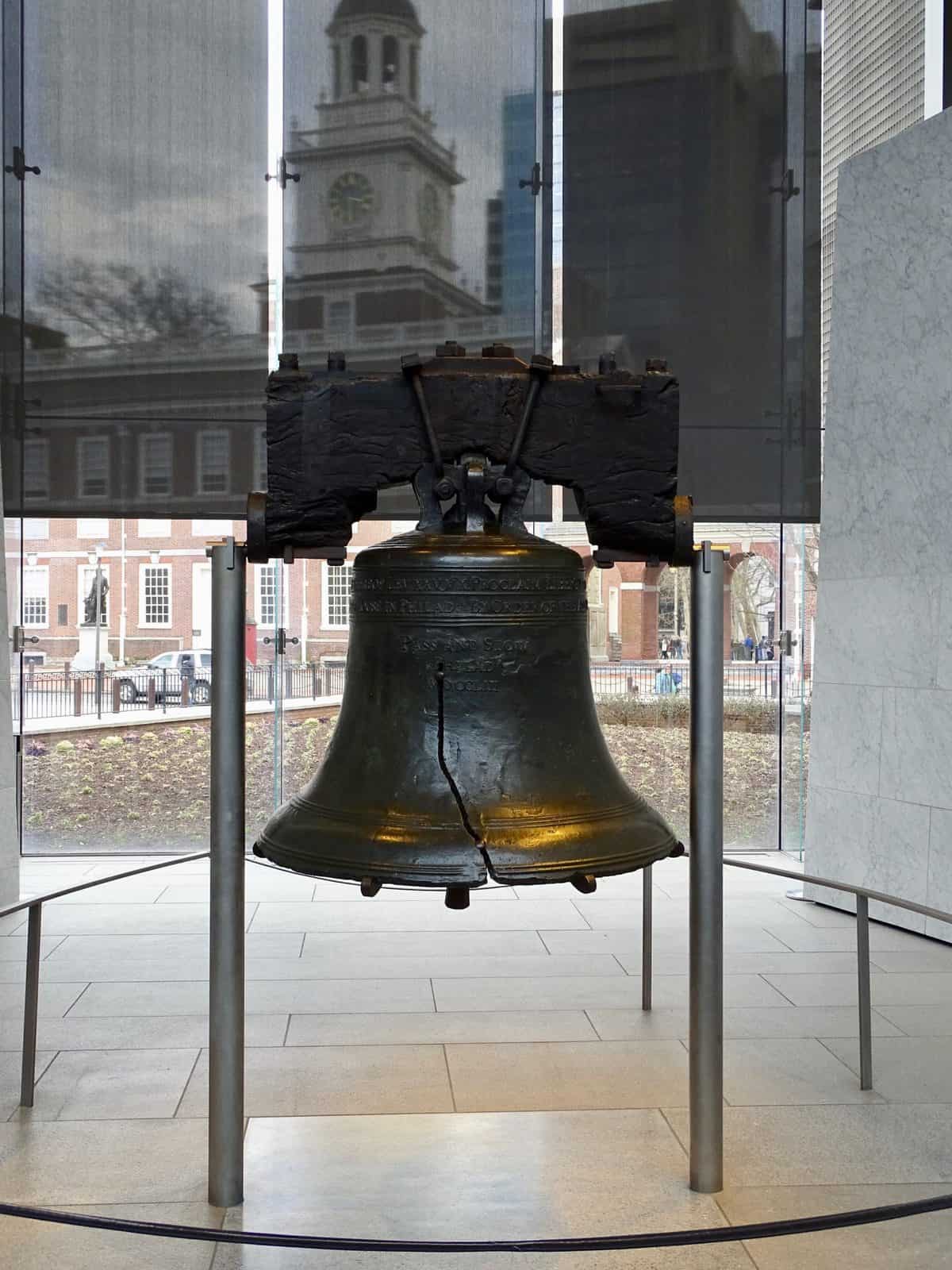Touring the Met Opera House in New York City
On a recent trip to New York City, we enjoyed a tour of the largest opera house in the world, the Metropolitan Opera House. Now part of the Lincoln Center for the Performing Arts, the Metropolitan Opera was founded in 1883 and the first opera house was located at Broadway and 39th Street. As the Met Opera grew in popularity, it needed more space and joined other organizations to form The Lincoln Center for the Performing Arts, a 16.3 acre complex on the Upper West Side of Manhattan. Lincoln Center first opened in 1962 with the New York Philharmonic, adding the New York City Ballet in 1964 (in the Koch Theater) and then the inauguration of the Opera House in 1966. Across the complex, Lincoln Center is home to 30 indoor and outdoor facilities, including water features and a grassy hill across from the Juilliard School.
A traditional Met season, which includes 18-22 operas and approximately 200 shows for over 800,000 patrons, begins in October, breaks during February, and concludes in May. The Met Opera has performed 32 world premier operas and is its popular radio and television broadcasts are seen by millions each week. Today, there are over 3,000 employees (more than half are full time!) and 17 different unions represented at the Met Opera House.

There are several tours offered throughout the Lincoln Center complex. We enjoyed the family friendly tour of the Met Opera House and appreciated the opportunity to see so many elements of a performance.

Travel Tips:
Would you like to save this?
Note: Photography is not allowed inside the Met Opera while on tour.
Six Stops on the Tour of the Met Opera House:
- The Sybil Harrington Auditorium: The wooden panels on the walls are African rosewood and have strong artistic sound properties for an opera house. Note the small screen on the back of each chair, installed in 1995. The screens translate the operas in four languages: English, Spanish, German, and Italian. Be sure to look up and count the (12) chandeliers hanging from the ceiling, a gift from Austria, and the sculpture above the stage (there’s a tiny window with shutters hidden behind the sculpture, used by a sharp shooter guard if the presidents ever come to the opera). And peek down into the orchestra pit, which can fit up to 110 musicians. On the way out of the auditorium, look out for seat BB1, which is reserved for the doctor on call, who attends every performance in case of an emergency. (There’s a waiting list to be the MD on call!)
- Costume Shop (2nd floor): The Met Opera uses over 8,000 costumes a year, with over 2,000 new costumes made every year in house by the tellers (who make costumes for male singers) and seamstresses (who make costumes for female singers). Each costume can cost up to ten thousand dollars. The shop has (seemingly endless) racks and bins (well organized!) of everything from costumes to stockings, shoes, and accessories. Over 100 wigs are also made, in house, every season, for specific singers. Make sure to hold the demo costume to get a feel for how heavy the costumes are.
- Prop Room (4th floor): Some of the most popular props include weapons and umbrellas. Many operas also include animals such as horses, donkeys, and dogs, all of which are fed a special diet before and during the show.
- Behind the stages: Get up close to all five stages, including the main stage, three side wagon stages that rotate over the main stage and the fifth stage that rises above the main stage. During any given show, there are 90 people working on and behind the stage, including electricians, stage hands, and prop assistants. The ceiling of the stage is 14 stories high!
- The rehearsal spaces: There are two main rehearsal spaces (The Orchestra Room for the orchestra and the “C Stage” for the dancers) used each day by various casts.
- The Set Studio and Carpentry Department: The space includes huge woodshop rooms and machines. See if you can find a discarded bent nail, which is considered a lucky charm since it is the most used item in set design.

Looking for tours of other music venues? Check out our posts featuring the Boston Symphony, Wang Theatre in Boston, Radio City Music Hall in New York City, Carnegie Hall in New York City, Met Opera House in New York City, and The Bushnell Performing Arts Center in Hartford, Connecticut. And follow along on our adventures on Instagram, Pinterest, Facebook, and Twitter. And see our full index of Manhattan attractions.















I’ve spent a substantial amount of time in New York, but never made it to the Met Opera House. I’d love to see an opera there next time I am in town. The tour you suggested is a good option too!
I love that brutalist facade contrasted against the softer water features! Did your tour talk about the exterior at all?
This is such a great write up of the Opera House, the facade is quite different for a “classical” building, it would be so fascinating to see the inside! Sounds like a guided tour is a great idea, would love to see it in real life 🙂
The Met Opera House is truly magical. I had no idea they offered tours, but it’s a one of kind experience if you’re able to go. I’ll have to take a tour one day for the behind the scenes experience.
It was wonderful to read about the metropolitan opera, which I visited many decades ago. I love the interesting facts about a window for a sharp shooter, the screens that translate into various languages, and the number, and cost of all the costumes.among so many interesting facts. Thank you so much.
When I go to New York, I usually go to a Broadway show. However, this looks like a great alternative. While I’m not much into opera,I think the tour would be fascinating.